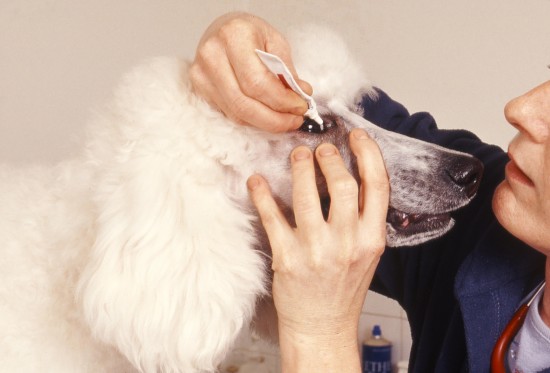
The causes of itchy skin in a dog can be many. The itchy dog is an area of enormous frustration to the dog owner as the causes are sometimes unclear and the recurrence of the condition can be maddening.
Parasites such as fleas, lice and mites are common reasons for scratching.
Flea allergy dermatitis is the most common cause of itchy skin in a dog. Always consider fleas a likely cause. All itchy dogs are allergic to fleas. Use a good quality flea control.
Scabies in a dog will cause extreme mutilation and distress to the dog because it will scratch constantly day and night. Scabies is caused by a mite that is contagious to people. It is usually caught from a dog or fox. Dead foxes on the road can be a source of infection.
The red mange is caused by a mite called Demodex. This is not a common cause of itchy skin in a canine. Demodex lives in the hair follicles and can cause inflammation and pustules which can develop into pruritis. Allergies are a very common cause of itchy skin in a dog. Allergies in dogs fall loosely into two groups. Group one is food allergy. Group two is a condition called atopic dermatitis.
Food allergies cause severe inflammation and itching. They are not uncommon.
Atopic dermatitis is very common in dogs and is essentially an allergy to pollens, dust mites and household spores. Grass pollens are the biggest cause and may see a seasonal pattern to the pruritis. Dust mite will be present all the time and may cause continuous itching and scratching year round.
Contact allergy is not a common cause of itchy skin in a dog. It does occur however and is usually on the area where contact with the skin occurs. This is usually on the abdomen where the dog lies under a tree or on the face or nose if the animal is allergic to its food dish.
Malassezia is a yeast that grows on the skin of dogs. It is usually present where moisture develops from chronic inflammation and licking due to allergies. It commonly grows in ears and between toes. It is frequently overlooked by veterinarians when assessing the itchy skin in a dog.
Pyoderma is an infection of the skin. Infected skin can be very pruritic. Skin becomes infected when the dog licks, chews, rubs, scratches and itches constantly at itself damaging the skin and allowing bacteria to colonise and establish infection.
It is possible to end the frustration of a dog that won't stop scratching
You can stop itchy skin in a dog without drugs and without going to the vet http://itchydogvet.com
 Getting Involved In Canicross ( Canix )
Getting Involved
Getting Involved In Canicross ( Canix )
Getting Involved
 Poxvirus Infections In Birds
Poxvirus Infectio
Poxvirus Infections In Birds
Poxvirus Infectio
 Over-the-counter People Ointments & Treatments You Can Use On Dogs
Over-the-counter
Over-the-counter People Ointments & Treatments You Can Use On Dogs
Over-the-counter
 Special Pet-veterinary services available in White Rock Lake
Special Pet-veterinary services available in White Rock La
Special Pet-veterinary services available in White Rock Lake
Special Pet-veterinary services available in White Rock La
 Why Do Cats Meow At Us?
Why Do Cats Meow
Why Do Cats Meow At Us?
Why Do Cats Meow
Copyright © 2005-2016 Pet Information All Rights Reserved
Contact us: www162date@outlook.com